For nearly 100 years, the former Bon Marche store was the first building seen by people leaving the railway station. The store expanded to its present size in the 1930s, when it took over an adjoining temperance hotel and a joinery business. The premises are now named Pen Cob from its location by The Cob (Embankment Road) which was reclaimed from the sea, in the early 1800s. The land beneath Station Square was reclaimed in 1907.
A photograph and text about the history of Pen Cob.
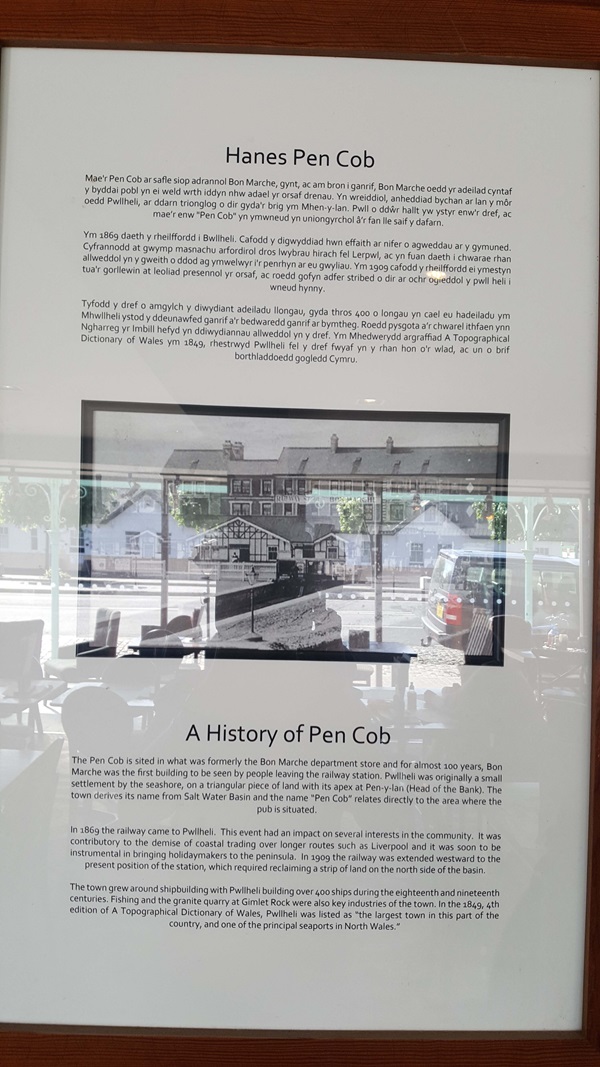
The text reads: The Pen Cob is sited in what was formerly the Bon Marche department store and for almost 100 years, Bon Marche was the first building to be seen by people leaving the railway station. Pwllheli was originally a small settlement by the seashore, on a triangular piece of land with its apex at Pen-y-lan (Head of the Bank). The town derives its name from Salt Water Basin and the name “Pen Cob” relates directly to the area where the pub is situated.
In 1869 the railway called came to Pwllheli. This event had an impact on several interests in the community. It was contributory to the demise of coastal trading over longer routes such as Liverpool and it was soon to be instrumental in bringing holidaymakers to the peninsula. In 1909 the railway was extended westward to the present position of the station, which required reclaiming a strip of land on the north side of the basin.
The town grew around ship-building with Pwllheli building over 400 ships during the eighteenth and nineteenth centuries. Fishing and the granite quarry at Gimlet Rock were also key industries of the town. In the 1849, 4th edition of A Topographical Dictionary of Wales, Pwllheli was listed as “the largest town in this part of the country, and one of the principal seaports in North Wales”.
A plaque documenting the history of Pen Cob.
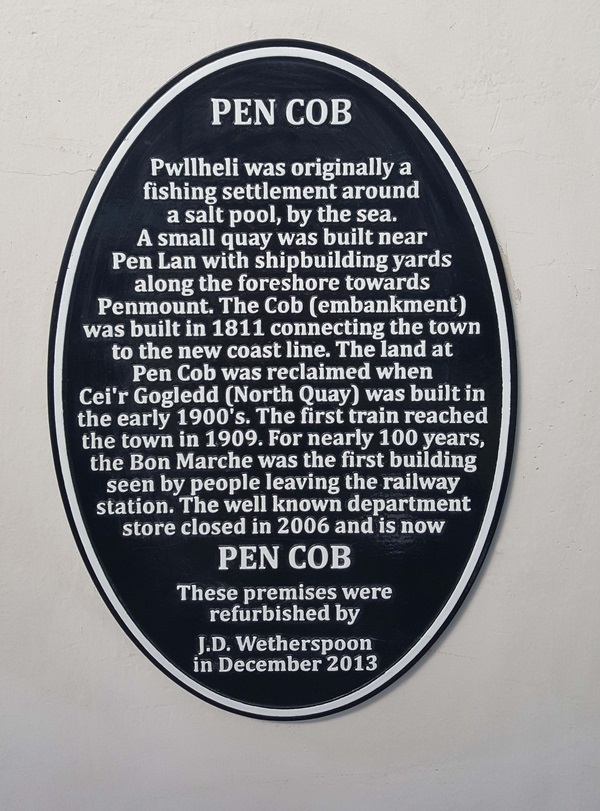
The text reads: Pwllheli was originally a fishing settlement around a salt pool, by the sea. A small quay was built nearer Pen Lan with ship-building yards along the foreshore towards Penmount. The Cob (embankment) was built in 1811 connecting the town to the new coast line. The land at Pen Cob was reclaimed when Cei’r Gofledd (North Quay) was built in the early 1900s the first train reached the town in 1909. For nearly 100 years, the Bon Marche was the first building seen by people leaving the railway station. The well-known department store closed in 2006 and is now Pen Cob.
A photograph and text about Solomon Andrews.
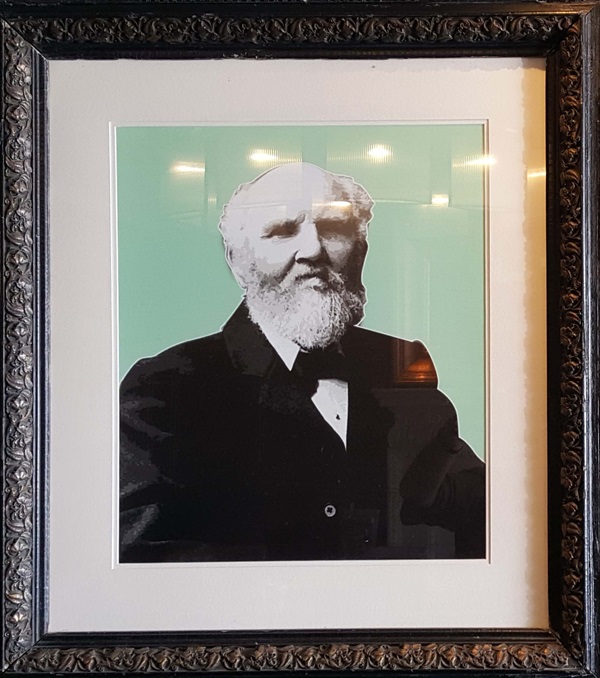
The text reads: Solomon Andrews was a British entrepreneur and head of Solomon Andrews and Son bus and tram-operating company, based in Cardiff. In Pwllheli, Andrews was responsible for the West End holiday resort, which included a promenade, housing, roads, a recreation ground, golf course, and the West End Hotel. The stone required to build the West End was provided by the local quarry that he leased at Carreg-y-defaid.
The company constructed the Pwllheli and Llenbedrog Tramway which carried the stone and passengers. The West End Hotel was constructed first along with large houses numbered 1-4, The Parade. The hotel was probably completed by 1895 and the houses in 1896.
The construction was mostly concrete, with the joinery being provided by his workshops in Cardiff and delivered to Pwllheli by rail. Construction of housing and shops in Cardiff Road was undertaken between 1897 and 1901.
The Pwllheli coat of arms.
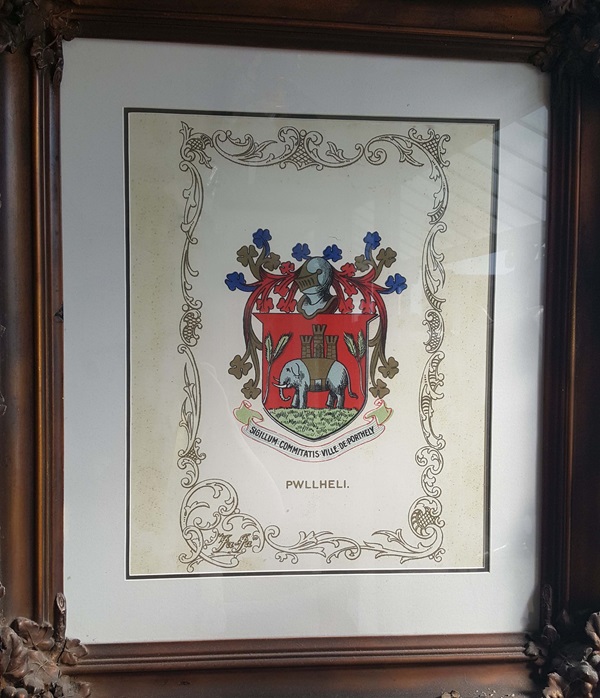
An old photograph of Pwllheli, with Bon Marche in the background.
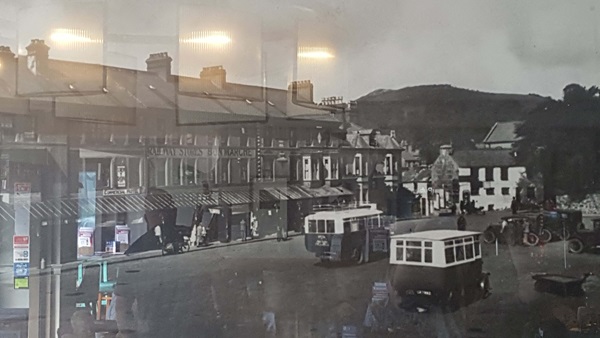
External photograph of the building – main entrance.
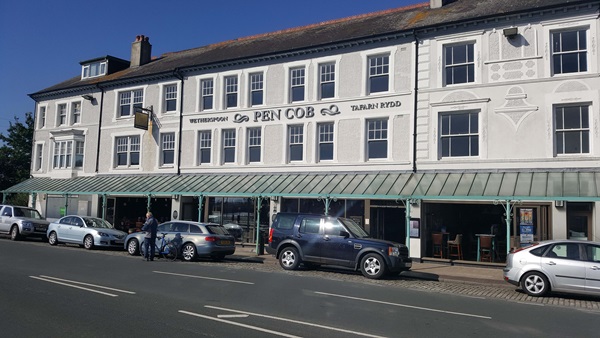
If you have information on the history of this pub, then we’d like you to share it with us. Please e-mail all information to: pubhistories@jdwetherspoon.co.uk